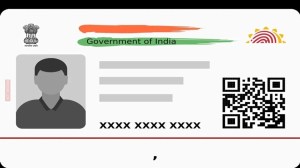
nps
The National Pension System (NPS) is a voluntary long-term retirement savings scheme designed to enable systematic savings among Indian citizens. It was launched by the Government of India in 2004, primarily for government employees, and later extended to all citizens of India in 2009. The scheme is regulated by the Pension Fund Regulatory and Development Authority (PFRDA).
Here are the key features of the National Pension System (NPS):
1. Voluntary and Long-Term Savings:
NPS is a voluntary retirement savings scheme that encourages systematic and regular contributions from individuals during their working years.
2. Dual-Tier Structure:
NPS has two tiers:
Tier-I: This is the mandatory pension account with restrictions on withdrawals. The accumulated savings in this tier are meant to provide a pension after retirement.
Tier-II: This is a voluntary savings facility with no withdrawal restrictions. Subscribers can withdraw money as and when needed.
3. Individual Pension Accounts:
Each subscriber under NPS has an individual pension account. Contributions are invested in various financial instruments such as equity, government securities, corporate bonds, and alternative assets.
4. Professional Fund Management:
NPS funds are managed by professional fund managers appointed by the PFRDA. Subscribers can choose their fund manager and investment options based on their risk tolerance and financial goals.
5. Tax Benefits:
Contributions to NPS are eligible for tax deductions under Section 80CCD(1) of the Income Tax Act. Additionally, contributions up to a certain limit are eligible for an additional deduction under Section 80CCD(1B).
6. Portable and Flexible:
NPS accounts are portable across jobs and locations. Subscribers can continue their NPS account even if they change jobs or locations.
Subscribers can choose the amount they want to contribute regularly and can make one-time contributions (voluntary) as well.
7. Withdrawals and Annuity:
At the age of 60, subscribers can withdraw a portion of the corpus tax-free. The remaining corpus must be used to purchase an annuity plan from a PFRDA-regulated life insurance company, which provides a regular pension.
Subscribers can also defer the withdrawal and continue the account up to the age of 70.
8. NPS for Corporates and Government Employees:
NPS is also available to employees in the corporate sector and government employees. Employers can contribute to their employees’ NPS accounts, and employees can make additional voluntary contributions.
9. Tier-I Swavalamban Scheme:
The government launched the Atal Pension Yojana (APY) as part of NPS, targeting the unorganized sector. It provides a guaranteed pension between ₹1,000 and ₹5,000 per month after the age of 60, depending on the contributions made during the accumulation phase.
NPS is aimed at providing financial security during old age and encouraging a culture of saving for retirement among the citizens of India.
Read More
Related News























